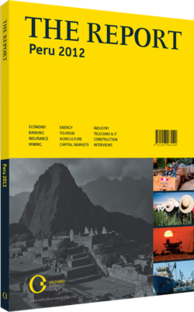OBG talks to Pedro Olaechea, President, National Society of Industry (SNI)

Interview: Pedro Olaechea
Which industrial segments have experienced the greatest development in recent years? Which could benefit from continued investment?
PEDRO OLAECHEA: Our textile industry has contracts with global firms to export fabric, but very few of the clothes you see on the catwalk are made in Peru. We need to work on adding value, and steps have already been taken in this direction. With increasing technological development, local businesses are starting to add value to the industrial chain. Firms in this country are also beginning to develop brands, but this remains our biggest weakness. When a crisis hits, branding can save a company because those with generic products will be the victims.
Last year at SNI we broadened our scope to include the telecommunications, software and computing industries because modern industrial development is so reliant on robotics and computing. The industrial paradigm has shifted, and we need to be aware of the fact that new technologies are increasing the challenges and pushing change at a faster pace. So we have launched industries that are developing along with the market, although we still lack clusters and innovation development.
Peruvian industry has been expanding within the framework of economic growth. However, because the country is an open and competitive market, and as there have been no grants or subsidies for national industry, local businesspeople have had to use their imaginations. Many people think that Peru is focused on exporting raw materials, yet in the mining industry, many of the industrial plants, factories and other facilities have been built by domestic companies. In fact, Peruvian companies are exporting machinery to China, Australia and South Africa.
How have the country’s free trade agreements (FTAs) affected local industrial development?
OLAECHEA: The FTAs allow Peruvian industry to expand beyond the local market of 29m people. There have been some issues with handling, Customs and the undervaluation of goods, but they are not problems inherent to the agreements.
We have some way to go in terms of fulfilling our obligations to the domestic market, but it is not an issue of our companies being competitive. Peruvian firms are able to compete in global markets. Moreover, there are positive aspects of the FTAs, such as the transfer of knowledge and skills. In addition, our buyers check that we are satisfying the basic rights of workers and using environmentally friendly, as well as socially responsible, practices.
In textiles, if we try to compete with countries in which the government subsidises production to maintain exports, then it is not a level playing field. We therefore have had to find a niche, which is in quality products. In terms of cotton, the most expensive kilo of cloth exported to the US is Italian and the second most expensive is Peruvian. In other words, the quality of local cotton is exceptional.
Big mining corporations came here, which brought back Peruvian engineers who had studied abroad, and as a result we have gained know-how and technology transfer. The FTAs have been important catalysts in terms of Peru’s development. As we continue growing and increase our participation in foreign commerce, we are forced by the international community to address our deficiencies.
Lack of reliable power is a concern. What kind of solutions do you expect from the government?
OLAECHEA: This country needs to think about developing a sustainable energy mix. We should also consider the establishment of a largely hydroelectric grid. Gas could offer a solution as well. In addition, we have significant oil resources, but they are not being fully exploited. The country finished 2010 with a fiscal surplus of $6bn, but even with our vast natural resources, we have not been able to reduce poverty rates and infrastructure is not keeping up.
You have reached the limit of premium articles you can view for free.
Choose from the options below to purchase print or digital editions of our Reports. You can also purchase a website subscription giving you unlimited access to all of our Reports online for 12 months.
If you have already purchased this Report or have a website subscription, please login to continue.

